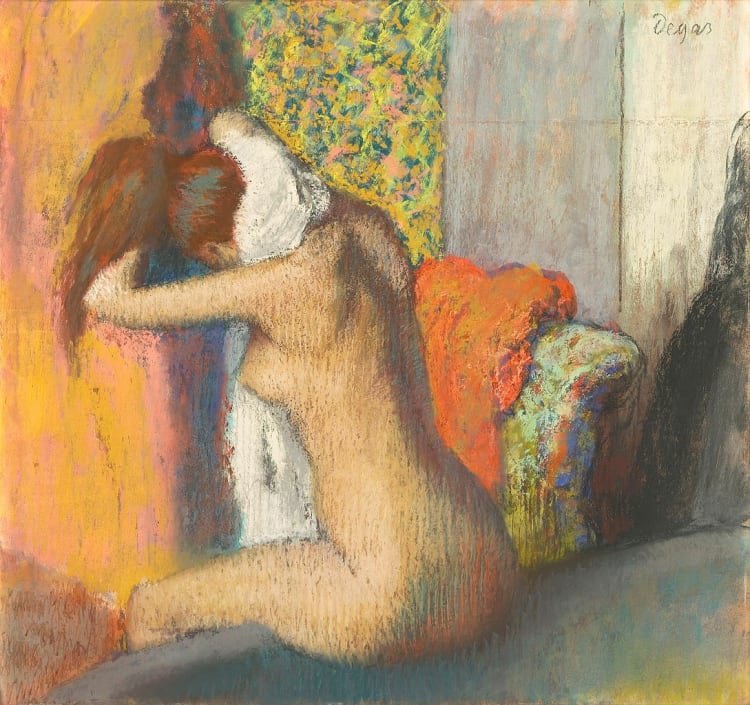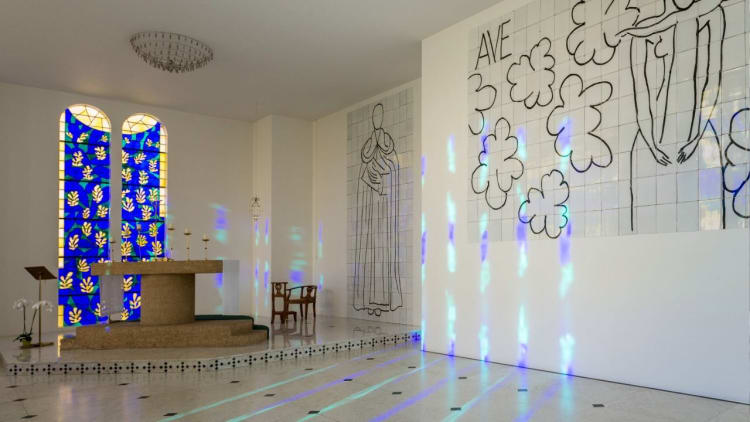Edgar Degas (1834-1917), French painter and sculptor, is considered one of the major artists of the Impressionist era, along with Claude Monet, Auguste Renoir and Camille Pissarro. He was also a precursor in the field of photography.
Discover 5 important things to know about Edgar Degas.

1 - He received a classical education
His real name was Hilaire Germain Edgar de Gas, known as Edgar Degas, who was born in Paris on July 19, 1834 and died in the same city on September 27, 1917.
He studied at the Lycée Louis-Le-Grand in Paris where he met Henri Rouart and Ludovic Halévy with whom he became friends.

Self-portrait photograph, Edgar Degas, 1895
After studying law in obedience to his father's wishes, he discovered a passion for art and became a tireless draughtsman in the Cabinet des estampes of the Bibliothèque Nationale de France, where he copied works by Andrea Mantegna, Albrecht Durer, Veronese, Rembrandt and Goya.
He also spent his days at the Louvre where he was admitted as a copyist. He then joined the studio of Joseph-Félix Barrias and studied painting with Louis Lamothe, a student of Ingres.
2 - Degas traveled a lot
Degas made many trips abroad. In particular, he went to New Orleans and Italy, in search of inspiration to discover the works of the great classical masters such as Botticelli or Raphael.
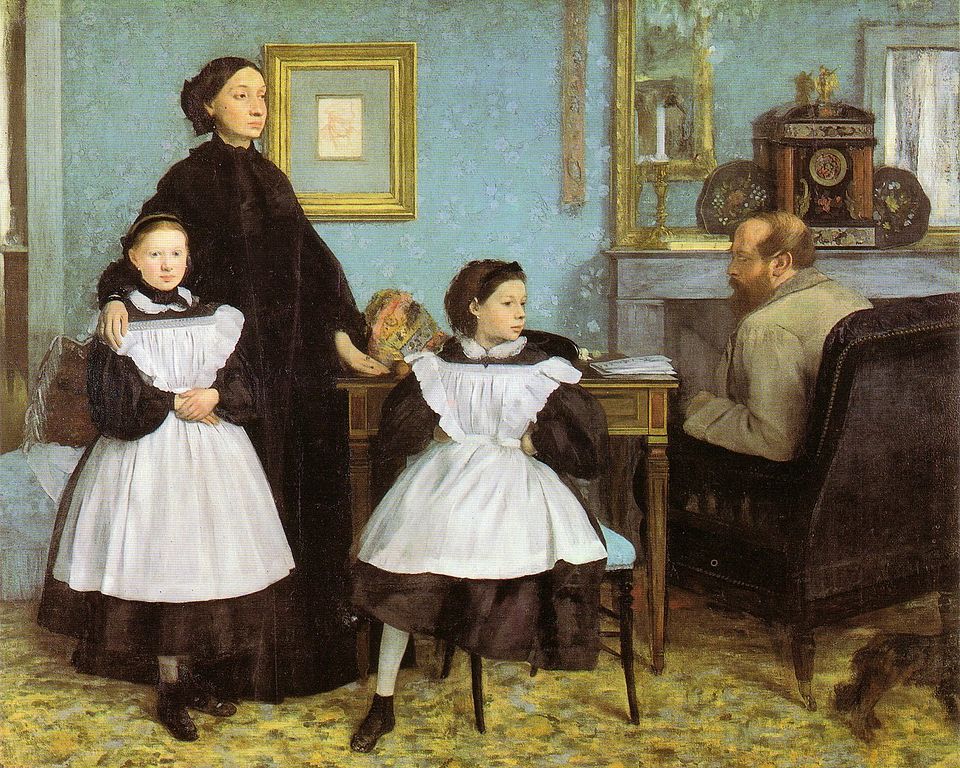
The Bellelli Family, Edgar Degas, 1858-1867
During his trip to Italy, he painted the famous picture entitled The Bellelli Family. This painting is now in the Musée d'Orsay in Paris and represents an Italian branch of Degas's family based in Naples. The painter thus followed the tradition of traveling to Italy that every European painter had to do at the time, but he mainly had to go there to settle problems with his family estate.
Another frequent reason for his travels was vacations and especially stays in the french countryside with his best friends.
Edgar Degas also went to Madrid because "Nothing, no nothing, can give the idea of Velasquez!" he said. In 1889, he also stayed in Tangier with the Italian painter Giovanni Boldini.
3 - Degas and the Impressionist movement
Edgar Degas is considered as one of the great artists of the Impressionist movement because he participated in seven of the eight exhibitions at the Impressionist Salon. In reality he never accepted to be classified in this movement.
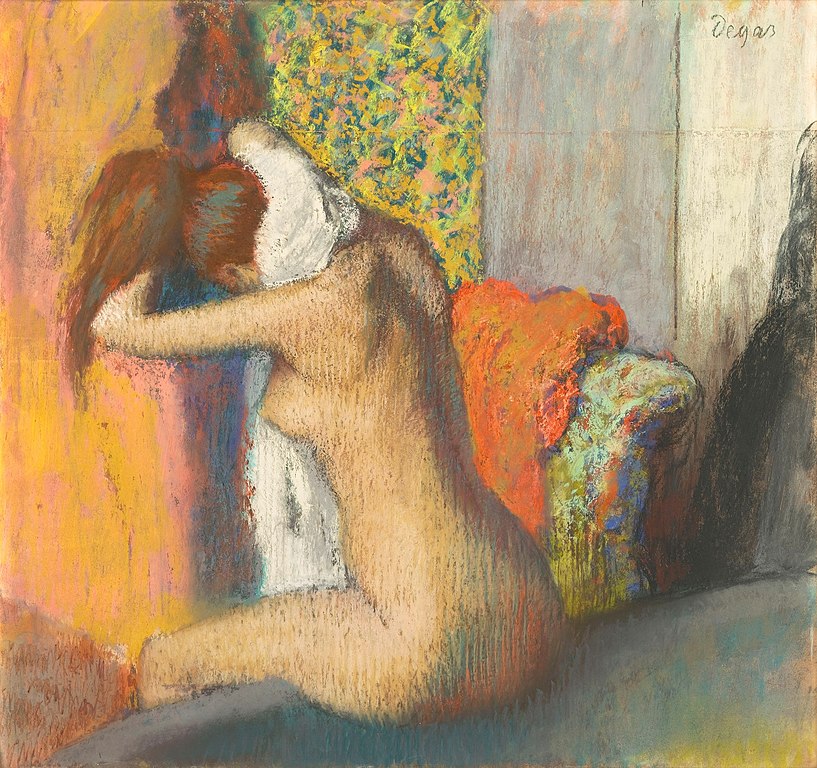
After the Bath, Nude Woman Wiping her Neck, Edgar Degas, 1895-1898
Even though he was a regular at the Guerbois café (a gathering place for the Impressionists), Edgar Degas had a complex relationship with the other artists of the movement, refusing to practice plein-air painting.
Read also: 5 things to know about Impressionism
4 - He liked to go to the racetrack
The theme of horse racing is recurrent in the work of Edgar Degas.
Being a great horse enthusiast, he was very attracted by the possibilities offered by the shapes and movements of the equines in action. Moreover, he said, "Nothing in art should look like an accident, even movement."
Degas continued the pictorial research undertaken by his predecessors: Eugène Delacroix and Théodore Géricault.
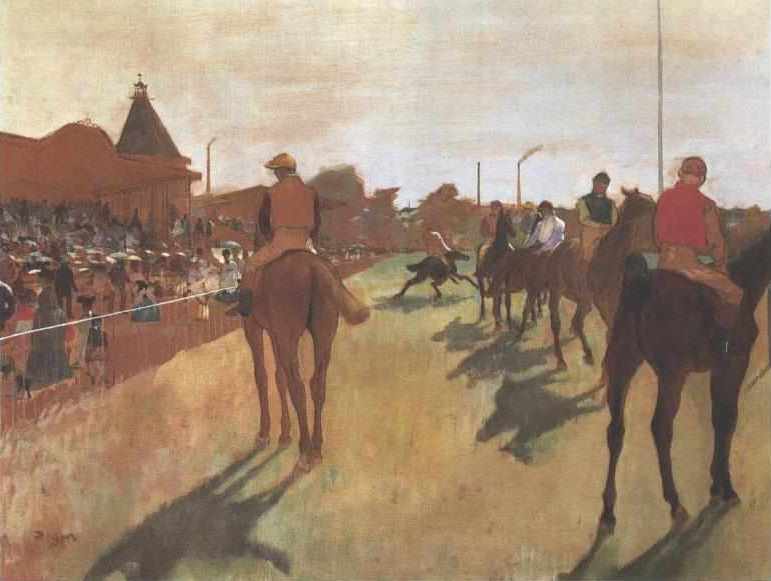
The Parade, Edgar Degas, 1866-1868
The painting The Parade, also known as Racehorses in front of the Stands, painted between 1866 and 1868, is one of the most famous paintings he did on the theme of horse racing. This painting representing the euphoria of a racetrack is now in the collections of the Musée d'Orsay.
5 - Degas and the world of dance
Edgar Degas was a regular visitor to the Paris Opera as a spectator, but also backstage. Indeed, from the 1870s until his death, Degas's favorite subjects were the dancers and the dance classes with the ballerinas in exercise, rehearsal and rest. He was particularly interested in the preparatory work of the dancers.
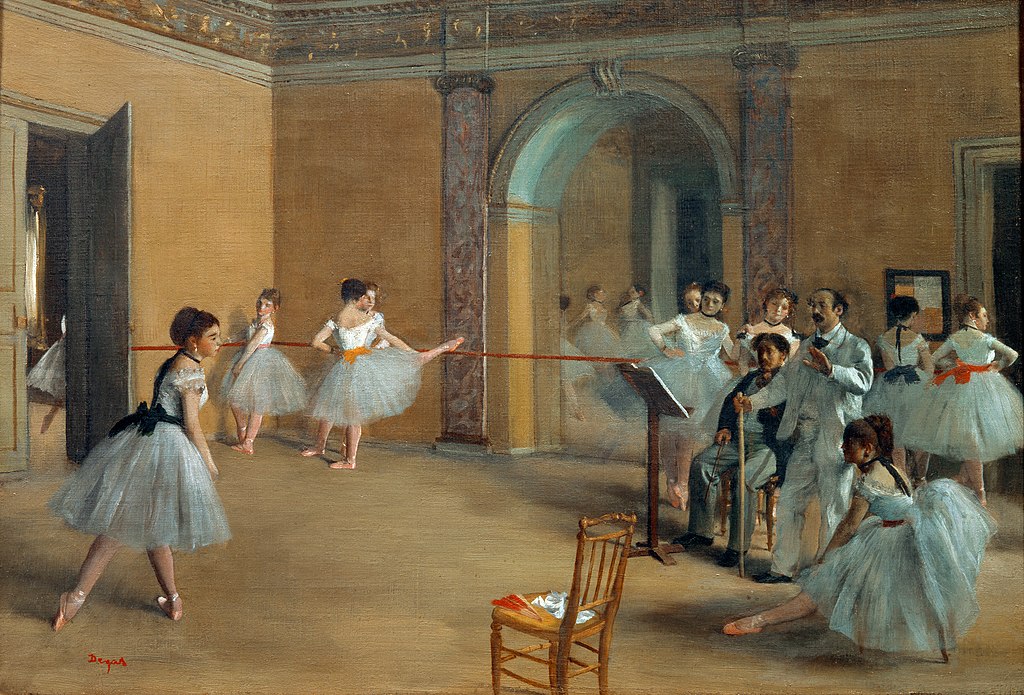
Ballet studio at the Opera in rue Le Peletier, Edgar Degas, 1872
Degas also created numerous wax or clay sculptures on the world of dance, sculptures that would remain almost unknown to the public until his death, with the exception of The little fourteen-year-old dancer, which he unveiled at the 1881 Impressionist exhibition.
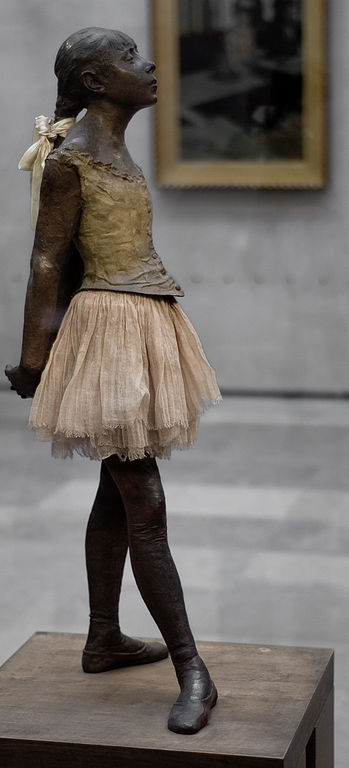
The little fourteen-year-old dancer, Edgar Degas, 1879-1881
Wearing hair, a tutu and real slippers, this work by Degas is breathtakingly realistic.
The artist presented it in a showcase as a specimen, his approach was between the artist, the anthropologist and the naturalist.
This sculpture made the art world react, accusing it of representing a girl in a bestial way.



